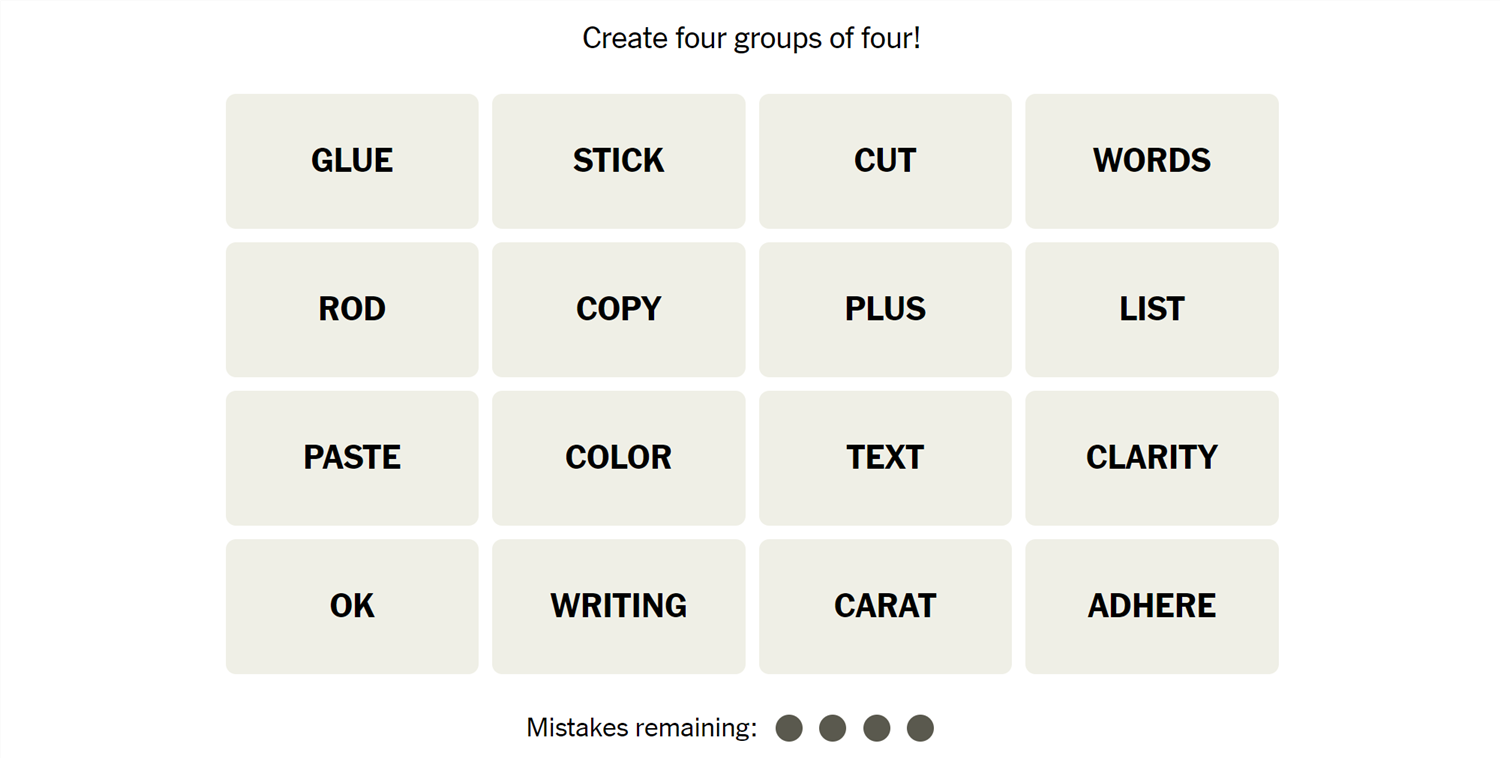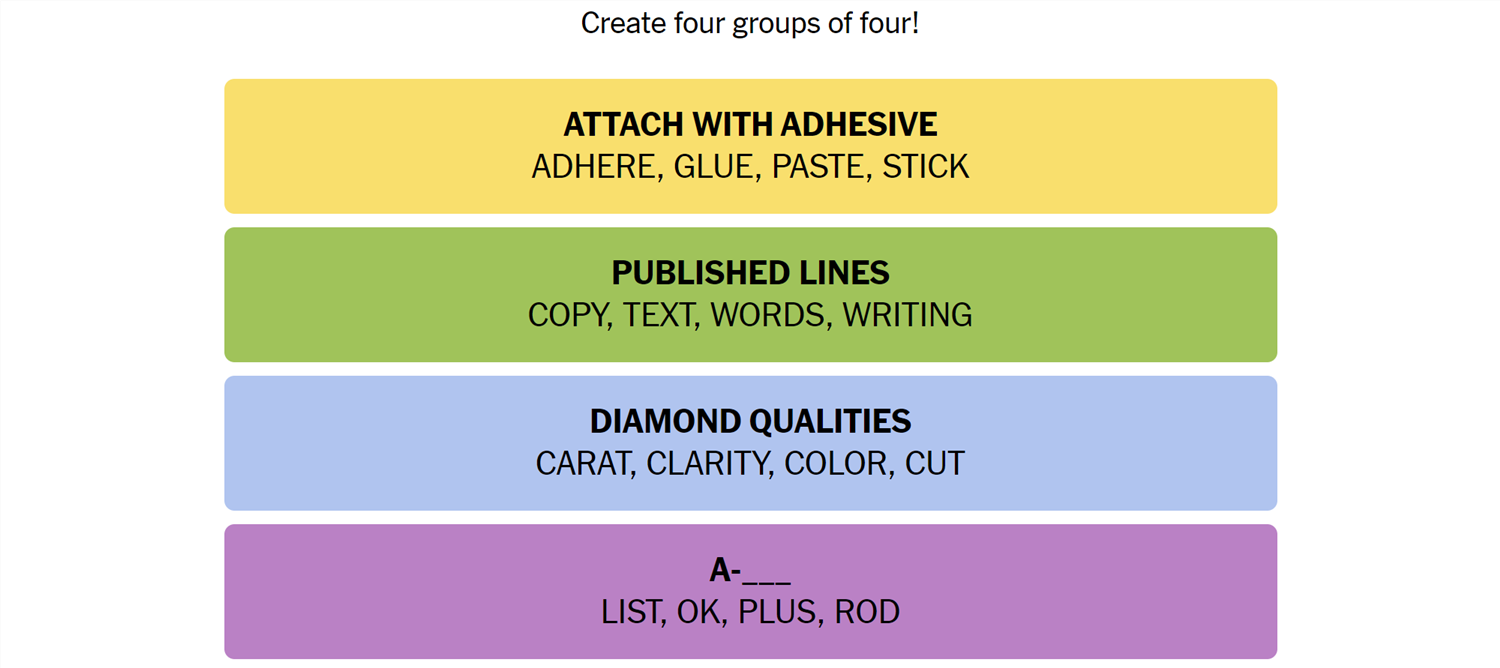Connections is a game from the New York Times that challenges you to find the association between words. It sounds easy, but it isn’t—Connections categories can be almost anything, and they’re usually quite specific. If you need a hand getting the answers, we’ve got you covered.
What Is Connections?
Connections is a game from the New York Times. The objective is simple: sort 16 words into groups of 4. Each group of words will be connected by some common idea or theme. That common element could be anything. We have seen everything from games that rely on the number of letters in the words to categories that require you to spot an extra letter at the end of the word. Sometimes they’re references to economics, other times they reference fairy tales. There is no telling what sort of association there will be between words.
Once you’re confident you understand the connection, select 4 words, then hit “Submit.” You have only four attempts in total, so don’t be too guess-happy.
Hints for Today’s Connections Categories
Here are a few small hints for the 313th Connections game to get you started:
- Yellow: A way of affixing something.
- Green: Words out there for all to see.
- Blue: Qualities that determine price.
- Purple: Try putting a letter in front of these words.
What Are Today’s Connections Categories?
If you still need help, the actual categories are:
- Yellow: Attach with Adhesive
- Green: Published Lines
- Blue: Diamond Qualities
- Purple: A- ______
Today’s NYT Connections Answers
Attach with Adhesive (Yellow):
Adhere, Glue, Paste, Stick
Published Lines (Green):
Copy, Text, Words, Writing
Diamond Qualities (Blue):
Carat, Clarity, Color, Cut
A-_____ (Purple):
List, Ok, Plus, Rod
How Did We Solve This Connections Game?
April 19th felt a bit harder than yesterday’s game.
The first category we figured out was Yellow. Adhere, glue, paste, and stick are all verbs that are used when you use glue to attach something. The category was “Attach with Adhesive.”
Next, we saw carat and started thinking about diamonds. Once we were on that mental train, cut, clarity, and color soon followed. The category, Blue, was properly named “Diamond Qualities.”
The remaining 8 were a bit more opaque than usual. Text, words, and writing all likely fit together, since they’re all related to written language. List might fit, but it is a bit of a stretch. Copy could also fit, since that is something you do with text. We ultimately opted to guess copy, and that guess proved to be good. Together, text, words, writing, and copy were the Green category, “Published Lines.”
The left list, ok, plus, and rod. We tried staring, shuffling, and chugging a triple shot of espresso, but nothing clicked for these words. We just stuck them together anyway. Purple was “A-____.” So, the actual words were “a-list,” “a-ok,” “a-plus,” and “a-rod.”
How Do You Guess Connections Categories?
There is no quick, reliable way to approach Connections like there is with Wordle, since Connections isn’t algorithmic. However, there are a few things to keep in mind that can help.
- Look for similar parts of speech. Are some words verbs and others nouns? Are some adjectives? Try mentally grouping them based on those categories and see if any other patterns jump out at you.
- Are the words synonyms? Sometimes categories will just be synonyms for a phrase, or very close to synonyms. Don’t rely too closely on this, though. Occasionally, Connections will deliberately throw in words that are sometimes synonyms to mislead you.
- Try saying the words. Sometimes, saying the words helps. One puzzle we saw included the words go, rate, faster, clip, pace, speed, move, commute, and hurry—all of which are obviously related to the idea of motion. However, when you say them, it becomes a little more obvious that only four (go, move, hurry, faster) are things you’d actually say to prompt someone to get moving.
- Expect the red herring. Connections usually has words that could be plausibly, yet incorrectly, grouped together. Take the words Bud, Corona, and Light, as an example. You might instinctively see those three words together and assume they’re lumped together in a category related to beer—but they weren’t.
- Look for distinct words. If a word on your board doesn’t have multiple meanings or can really only be used in one context, try using that word as the basis for a category.
- Shuffle the board. Sometimes, moving words around will help you look at them in new ways.
If you didn’t solve this one, don’t feel too bad—there’s always tomorrow! And those words may align with a topic you’re interested in, giving you a leg up on the competition.



